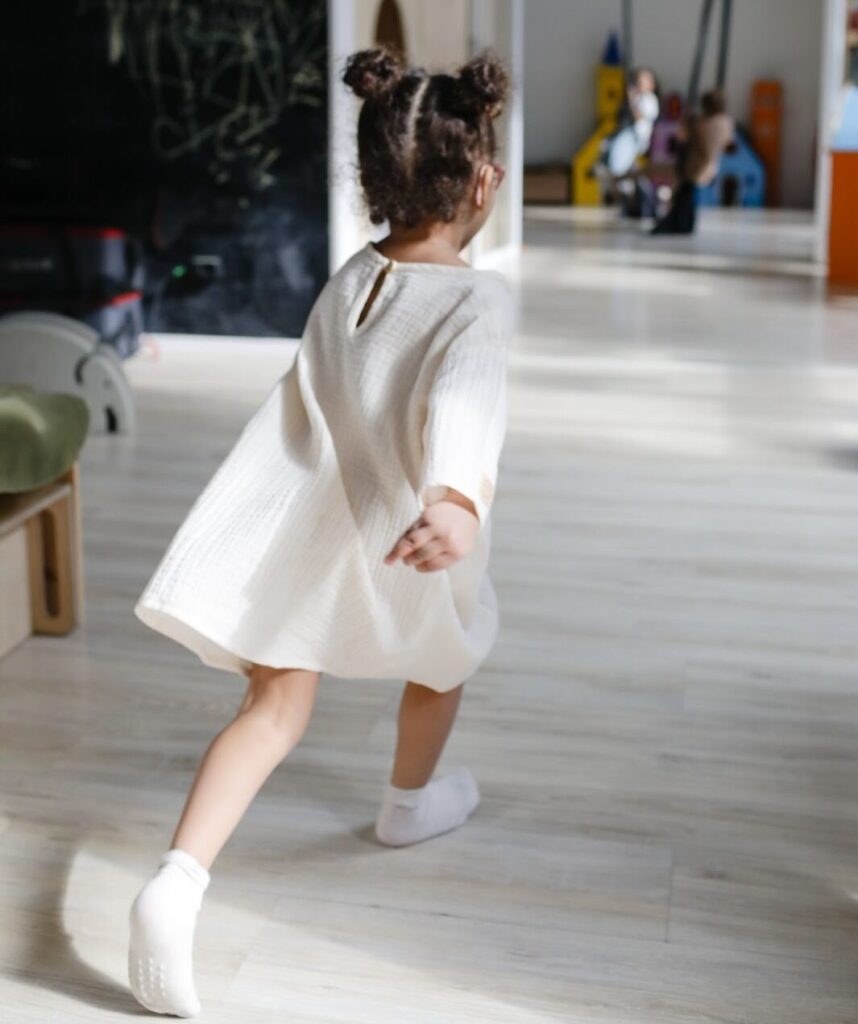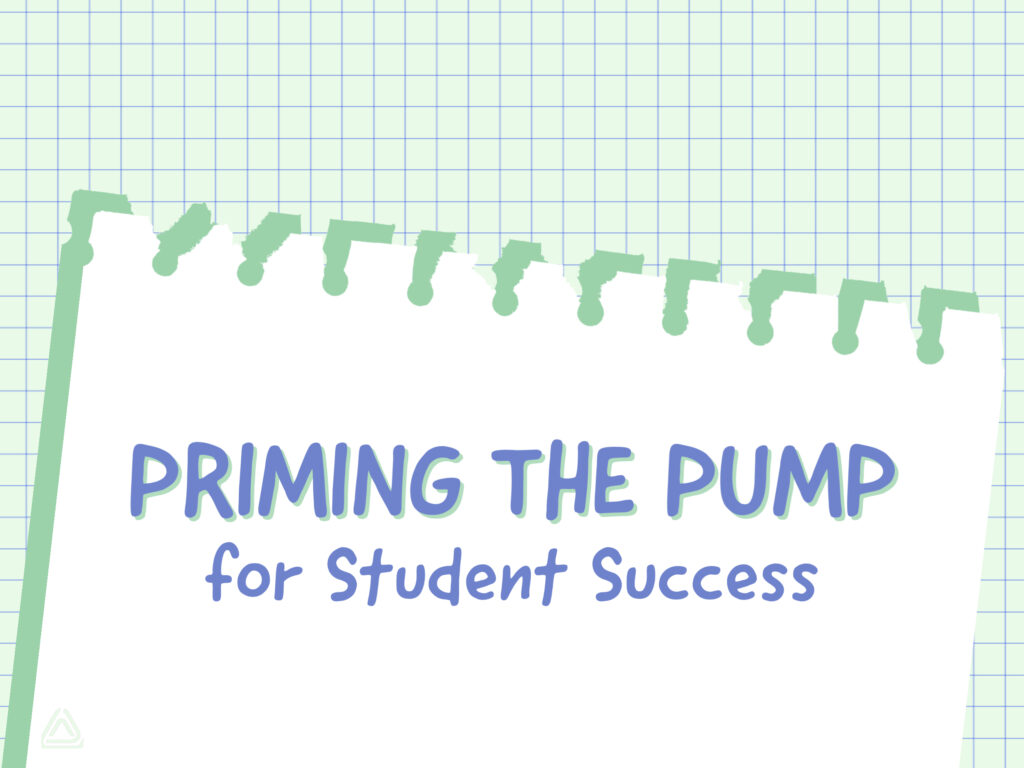
Most of us have heard the phrase, “prime the pump.” It refers to removing air from suction lines so liquid can freely flow when a pump is turned on. This preparatory concept can also be applied to social situations. Psychological priming is the idea that exposure to particular stimuli will influence how a person reacts later. The stimuli can be words, images, or actions that a person sees, hears, or experiences that prepares them for a later encounter. For instance, reading or hearing positive words before an activity tends to result in a more positive experience.
Teachers, therapists, and parents can use priming techniques to prepare their student(s) for upcoming events and activities, especially those that may be more difficult. Below is a list of priming activities that may be helpful for the classroom and home.
Priming Techniques
Establish Morning Routines
Morning routines set the stage for the day. In the classroom, a morning routine may include:
- Turning in homework
- Putting away backpacks and coats
- Checking in with the teacher
- Completing a simple work assignment
- and/or having a morning class meeting to review the schedule for the day
- Parents can do similar routines for dressing, eating breakfast, checking backpacks, reviewing any special activities for the day, and giving positive words when saying good-bye at school. These routines give structure to a child’s day and help to set expectations.
Introduce New Materials or Activities Prior to the Event
Reading stories, watching videos, or interacting with new tools or materials prior to doing a novel and potentially challenging task (priming) can be helpful in reducing anxiety and setting the stage for success.
For instance, if a child is sensitive to noise, a school team might think that using noise canceling headphones in music class would be helpful. However, placing the headphones on a child when they are already over-stimulates can potentially add to the problem. Instead, priming the child by having them interact with the headphones in a quiet and calm environment could be beneficial. The child may add some personalized stickers to make the headphones feel like their own. Then, the child can take the headphones to music class. Helping the child feel more comfortable and familiar with the headphones will result in a higher chance of wearing them when they are needed.
Review the Steps
Everyone likes to have a clear understanding of what needs to be done and expected outcomes when doing work. Providing children with a visual schedule or step by steps directions can guide them in their work. Showing an example of a finished product also helps understanding.
This can apply at home as well. As an example, if a child is cleaning their room, a checklist of what needs to be done can be provided (ie, pick up dirty clothes and put in the hamper, pick up toys and put in toy bins, make bed, dust, empty trash can, etc.). In addition, picture supports may be used to help the child organize the work. Pictures can be put on toy bins or dresser drawers to help the child know where things are to go. A picture of what the room looks like when it is clean can also be helpful so that the child can compare their work to the expected work.
Try Behavioral Momentum
Children will often give more effort when they feel they are successful. Behavioral momentum can be used to help set up a feeling of success. To use this technique, a child is asked to respond to a question or do something that is quick and easy for them (What is 1+7?). This is repeated again (What is 3+2?). Then the child is given a more challenging question (What is 12+4?). Think, “Easy, easy, hard.”
Use Positive Language
Using positive language and “can do” terms help to set the tone for a positive experience. Many psychological studies have been done that show the power of positive terms and images on people’s behavior. Be encouraging and celebrate effort as much as outcomes with your children and students.
Social Stories
Another powerful tool is a social story. A social story is an individualized story that presents simple, understandable steps to help the person handle challenging routines, navigate novel situations, or grasp new skills. Social stories only address one topic per story and use objective, non-threatening, and positive language that protect the self-esteem of the reader. The story which is written in first person language should focus on what the child can do. Prior to writing a social story, the author needs to gather information about the child’s experience and behavior.
Components to a Social Story
These include:
- Descriptive Sentences: Factual, opinion and assumption free statements. They are the most relevant factors of the situation. They are the backbone of the story.
- Perspective Sentences: Describe a person’s internal state, their knowledge or thoughts, feelings, beliefs. Usually used to describe others but can be for the reader (I don’t like or I like). Describe the invisible emotional and cognitive aspects of a social situation.
- Coaching Sentences: Suggestive responses or choices to a situation, gently directing the behavior of the person. Avoid, “I will” and use “I will try” or “I will work on…” Prepares them to act appropriately.
- Affirmative Statements: Stresses important points, refers to social rules, and reassures the person.
A social story should be made up of more descriptive, perspective, and affirmation sentences than coaching statements. A general rule of thumb is at least 50% of the story should be descriptive and there should only be at least 4-5 sentences for every 1 coaching statement. Pictures help to provide additional understanding.
Here is an example of a social story about loud noises at school:
Staying Safe When There Are Loud Noises at School
Sometimes at school there are loud noises.
Some of the loud noises are kids talking or yelling, announcements coming through the ceiling speaker, the restroom hand dryers blowing or the toilets flushing.
Loud noises hurt my ears and I want to run away from the noise.


Sometimes I run away from my class when I hear a loud noise.

When I run away from my class, my teacher gets worried because it is not safe.
When I hear a loud noise at school, I should…

Stop

Cover my ears with my hands

and ask the teacher to help me
I will try to cover my ears and ask the teacher for help when I hear a loud movie at school. It will keep me safe and help my teacher.
Priming techniques can help a child to do their best at school and at home. If you have a child or student who struggles with social skills, school performance or has delays that are impacting their everyday life, target interventions and therapy services may be warranted. Contact us for more information.



